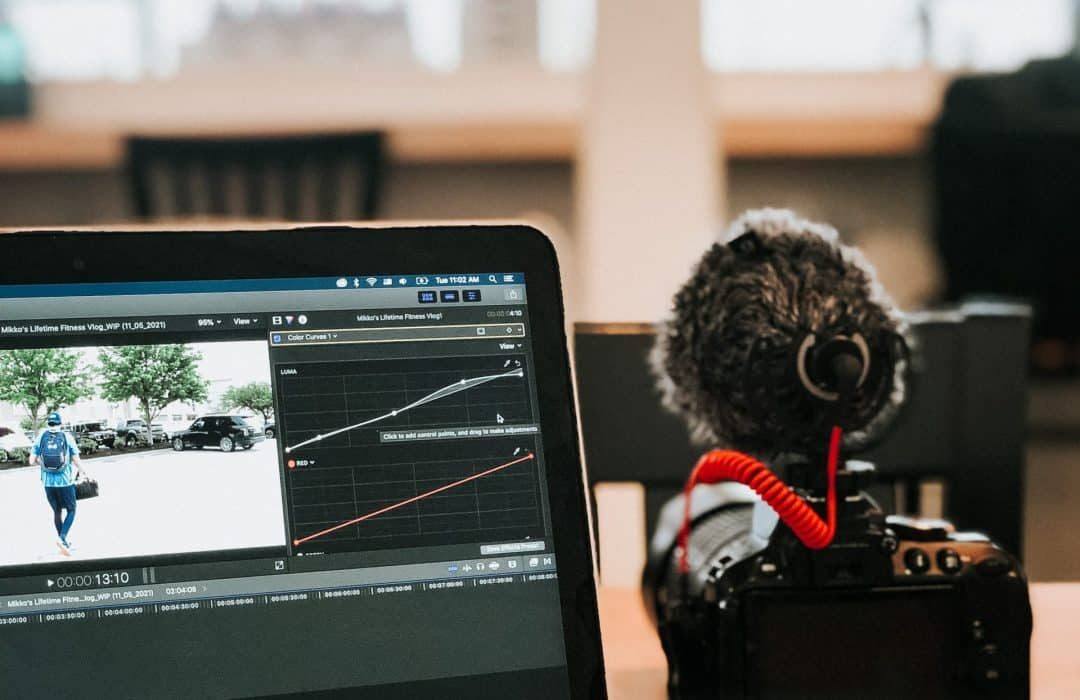
19 Jan Leveraging Social Media for Art Promotion
Social media has become an essential vehicle in the ever-changing world of modern art, providing artists with previously unheard-of chances for worldwide visibility and interaction. Social media sites like Instagram and X formerly known as Twitter have evolved into online galleries that allow artists to exhibit their work anywhere in the world. Social media goes beyond self-promotion to help artists collaborate and create communities through art promotion. It lets them interact with a wide range of people, share ideas, and contribute to the collective creativity of an international creative community. In this linked digital age, having a strategic online presence that is marked by genuine storytelling and direct interaction not only increases an artist’s exposure but also forges a closer bond with their audience, helping to launch careers to new heights.

Photo by Jakob Owens
Understanding Your Audience
Effective social media impact for artists begins with a profound understanding of their audience. This involves a thorough exploration of demographics, interests, and art preferences to tailor content for maximum resonance.It is recommended that artists engage with online art groups, contribute actively to pertinent debates, and utilize both popular and specialty hashtags in order to better tailor their work to the tastes of their intended audience. Through intimate engagement with these environments, artists may acquire significant knowledge about prevailing patterns, cultivating a more customized and focused approach to social media marketing.
Moreover, identifying the platforms where the ideal audience is most active is crucial. Different social media channels cater to diverse demographics, so focusing efforts on the platforms relevant to the target audience optimizes reach and engagement. Regularly analyzing content performance, monitoring engagement metrics, and actively seeking feedback allow artists to adapt their approach continuously. This dynamic understanding enables artists to consistently deliver captivating content that not only reflects their artistic vision but also resonates with the evolving tastes and interests of their social media audience.

Photo by Mariia Shalabaieva
Choosing the Right Platforms for Art Promotion
Making the right social media platform choices is a prerequisite for effectively promoting visual art. Various platforms serve different target audiences and types of content. Sites like Facebook, YouTube, Pinterest, Instagram, and TikTok provide special advantages for work that is visually focused. Image-focused material works well on Instagram because of its visual focus, but short-form videos on TikTok provide a more dynamic approach. For making visual boards and galleries, Pinterest is perfect, while Facebook offers a wide audience for all kinds of material. YouTube supports longer-form films, such as interviews with artists or in-depth looks at the processes involved in creating art.
Adapting your platform mix to your content and intended audience is crucial. Additionally, think about using secondary sites like LinkedIn for professional interaction in the art business and X formerly known as Twitter for community development through updates and conversations. You may maximize your online visibility and establish connections with a varied and interested audience by carefully selecting platforms that complement your content and audience preferences.

Photo by Frames For Your Heart
Crafting Compelling Content
For artists, the key to successful social media advertising is producing captivating material. Enhance the quality of your work by adding eye-catching images and engaging subtitles that captivate readers. Take your audience on a meaningful trip by sharing the stories that inspired your art and going into the creative process and deeper meanings. Use a variety of media, including images, films, live broadcasts, lessons, and behind-the-scenes looks into your studio life, to keep your material fresh.
In addition to visual diversity, leverage the power of relevant hashtags to increase discoverability. By strategically incorporating these tags, you amplify the reach of your content and connect with a broader audience that shares an interest in your artistic niche. Craft your content with authenticity, storytelling, and a variety of engaging formats to not only showcase your art but also build a stronger connection with your audience on social media.

Photo by Timothy Hales Bennett
Building a Strong Brand Identity
Building a robust brand identity is paramount for artists aiming to distinguish themselves in the crowded digital landscape. Consistency in visual elements, including logos, color schemes, and tone, is key to creating a cohesive and recognizable brand. Authenticity is crucial—share your artistic vision and values transparently to cultivate a sense of community around your art.
Actively engaging with your audience further solidifies your brand identity. Respond promptly and professionally to comments and messages, fostering a two-way connection. By establishing a strong and consistent brand presence, you not only enhance recognition but also create a more meaningful relationship with your audience, contributing to long-term success in the competitive realm of social media.

Photo by Will Francis
Utilizing Platform Features and Strategies
To maximize your social media impact, tap into platform-specific features and strategic approaches. Explore tools like Instagram Stories, Reels, X formerly Twitter threads, and Facebook Groups to diversify your content and engage with your audience in different ways. Running targeted advertising campaigns is an effective way to broaden your reach and connect with a wider audience interested in your art.
Collaboration is a powerful strategy—partner with fellow artists and galleries for cross-promotion, expanding your reach within relevant communities. Additionally, participating in online art challenges and contests not only adds a creative dimension to your content but also enhances exposure by tapping into trending topics and community-driven initiatives. By staying informed about and leveraging these platform features and strategies, you can elevate your social media presence and effectively connect with a broader and more engaged audience.

Photo by Myriam Jessier
Tracking and Analyzing Progress
Achieving success on social media is an ongoing journey that demands consistent monitoring and adaptability. Regularly delve into your social media analytics to gain valuable insights into your content’s performance and audience engagement. Identify patterns and trends to discern which types of content resonate most with your audience, and be prepared to adjust your strategy accordingly.
Embrace a mindset of continuous learning and improvement. Use the data gathered from analytics to refine your approach, emphasizing the creation of content that aligns with the preferences and interests of your audience. By staying attuned to the evolving landscape and being proactive in adjusting your strategies, you can ensure sustained growth and impact on social media. Success in the digital realm is a dynamic process that requires a commitment to ongoing analysis, adaptation, and improvement.

Promote Your Showcase Online and Offline
Photo by Firmbee.com
Conclusion
Creating a strong brand identity is essential for artists who want to stand out in the congested online market. Maintaining uniformity in visual components such as logos, color palettes, and tone is essential for developing a unified and identifiable brand. To build a community around your art, it is essential to be authentic and openly communicate your artistic vision and principles.
Having active conversations with your audience helps to establish your brand identity. Encourage a two-way dialogue by swiftly and professionally responding to messages and comments. Building a strong and dependable brand presence helps you stand out from the competition in the cutthroat world of social media by improving audience awareness and forging deeper connections with them.
Key Takeaways
1. Understand Your Audience – Thoroughly explore demographics, interests, and art preferences for targeted content. Engage in online art communities and use relevant hashtags for resonance. Identify and focus efforts on platforms where the ideal audience is most active. Analyze performance metrics and seek feedback for continuous adaptation.
2. Choose the Right Platforms – Tailor platform selection to content and audience. Consider the strengths of Instagram, TikTok, Pinterest, Facebook, and YouTube. Use secondary platforms like Twitter and LinkedIn for community-building.
3. Craft Compelling Content – Showcase art with high-quality visuals and engaging captions. Share the stories behind the work through various formats like photos, videos, live streams, and tutorials. Utilize relevant hashtags for discoverability.
4. Build a Strong Brand Identity – Maintain consistency in visual elements, logos, color schemes, and tone. Authentically share artistic vision and values. Actively engage with the audience by responding promptly and professionally to comments and messages.
5. Utilize Platform Features and Strategies – Explore platform-specific features like Instagram Stories, Reels, Twitter threads, and Facebook Groups. Run targeted advertising campaigns and collaborate with other artists and galleries for cross-promotion. Participate in online art challenges for exposure.
6. Track and Analyze Progress – Regularly analyze social media analytics for insights into performance and engagement. Identify top-performing content and adjust strategies accordingly. Embrace a mindset of continuous learning and improvement in response to audience dynamics.
FAQs
How do I identify the demographics and interests of my target audience?
To effectively identify the demographics and interests of your target audience, you can employ a multifaceted approach. Begin by utilizing social media analytics tools provided by platforms such as Facebook Insights, Twitter Analytics, or Instagram Insights. These tools can offer valuable insights into the age, location, and interests of your current followers. Pay attention to metrics like age distribution, geographical location, and the content that garners the most engagement. Additionally, consider conducting surveys or engaging in direct conversations with your audience. Surveys can provide detailed information about their preferences, expectations, and behaviors. Engaging in conversations through comments, direct messages, or online forums allows for a more qualitative understanding of your audience’s needs and desires. By combining quantitative data from analytics tools with qualitative insights from surveys and direct interactions, you can create a comprehensive profile of your target audience. This information becomes crucial for tailoring your content and marketing strategies effectively.
Can I use the same content across all social media platforms?
While maintaining consistency in your brand message is important, it’s equally crucial to recognize the unique strengths and expectations of each social media platform. The same content may not perform optimally across all platforms due to differences in audience demographics, engagement behavior, and content format preferences. For instance, content that thrives on Instagram, which is highly visual and focused on storytelling through images and videos, might not resonate as well on LinkedIn, where a more professional and informational tone is expected. Therefore, tailor your content to match the specific characteristics of each platform. Consider the audience demographics of each platform and adjust your content style, tone, and format accordingly. Emphasize visual elements on visually-oriented platforms, use hashtags effectively on platforms that support them, and craft more professional and business-oriented content for platforms like LinkedIn. By adapting your content to suit the unique dynamics of each platform, you enhance its effectiveness and engagement potential.
How often should I post on social media?
Determining the optimal posting frequency on social media involves finding a balance between staying visible to your audience and avoiding content fatigue. The ideal posting frequency can vary depending on the platform, industry, and audience preferences. Start by establishing a regular and consistent posting schedule. This consistency helps maintain a connection with your audience and establishes expectations. Monitor engagement metrics such as likes, comments, and shares to gauge the impact of your posts. Consider the platform’s algorithm and the nature of your content. For platforms like X formerly Twitter, where the feed moves quickly, more frequent posting may be acceptable. On platforms like Instagram or Facebook, where content has a longer lifespan, a slightly less frequent schedule may suffice.
Read this “Curating Your First Art Collection Showcase” guide that offers detailed instructions on how to organize and present an engaging art collection display as well as advice on how to have a successful exhibition and start your adventure as a curator.

